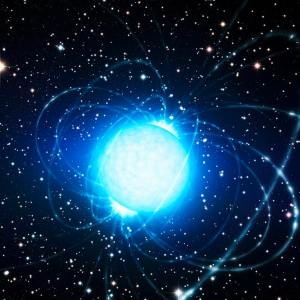Neutron star. Credit: ESO / L. Calçada.
–
Ordinary stars, such as the Sun, are actually immeasurable spheres of glowing plasma in which thermonuclear fusion reactions rumble. It’s hard to wait for geological features on something like this. However, neutron stars are completely different. They are, in fact, seeds of collapsed massive stars left in space after the ultimate supernova explosion. Seeds of very exotic, extremely dense matter.
Fabian Gittins. Kredit: University of Southampton.
–
Although neutron stars are extremely small, they contain so much matter that they are crushed by enormous gravity. As new research by a team led by Fabian Gittins from the University of Southampton in Britain has shown, their solid surface is traversed by structures that can be described with exaggeration as geological, but they are very small due to destructive gravity. Neutron stars are plus or minus 10 kilometers in size, but the “mountains” that rise on their surface reach fractions of a millimeter.
Due to their density, neutron stars have about a billion times more gravity than Earth, although they are many times smaller. They have an almost ideal spherical shape and all deviations from the smooth surface are only slight. Nevertheless, experts talk, with a certain poetic touch, about mountains on neutron stars.
Logo. Kredit: University of Southampton.
–
Gittins’ team modeled the formation of realistic neutron stars and their mountains, and eventually reached that height in fractions of a millimeter. That’s about a hundred times less than previous estimates. These are not just some completely abstract delights. The mountains of neutron stars have certain manifestations that we could detect. Reducing their height by the Gittins team is actually bad news, because it makes astronoming such a complication very difficult.
The point is that individual neutron stars don’t have to collide with something to emit proper gravitational waves. It is enough for their surface to be deformed, for example by mountains, and for a rotating neutron star, thanks to brutal gravity, to wave space-time with gravitational waves. The problem is that the lower such a mountain range, the less distinct the gravitational waves created. Such gravitational waves, which would correspond to single neutron stars, have not yet been observed. Future gravity observatories, which will be even more sensitive, could succeed.
Literature
Royal Astronomical Society 19. 7. 2021.
– .




